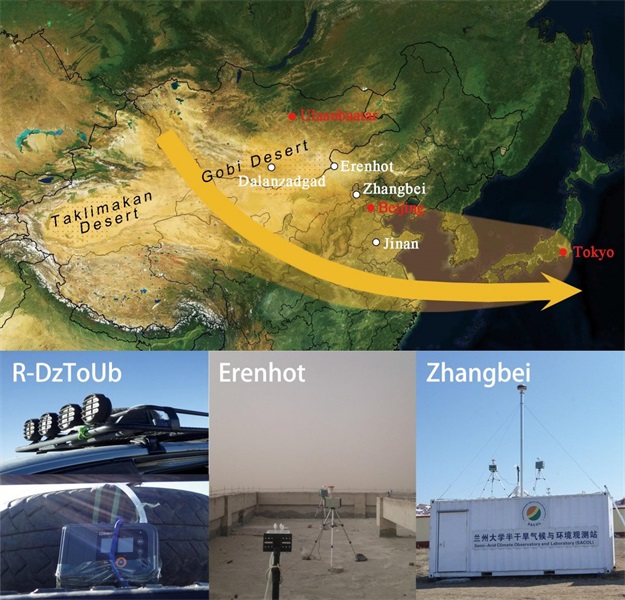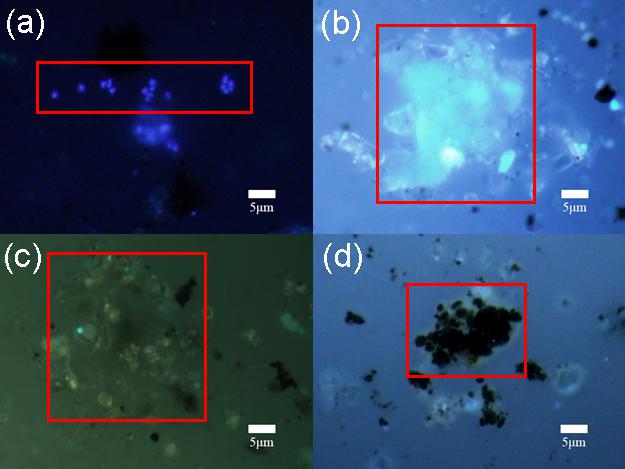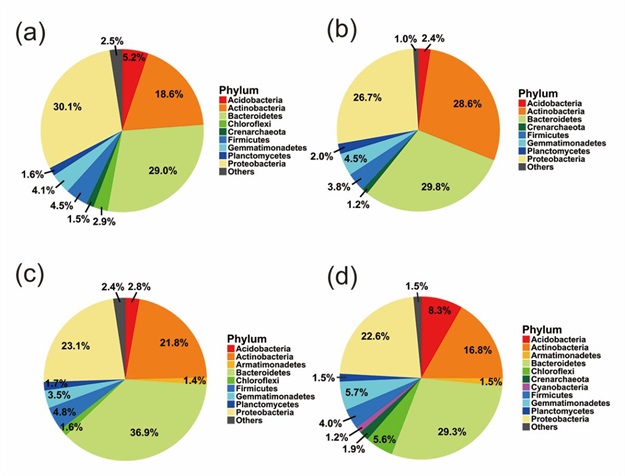The Bioaerosol research team of the school of Atmospheric science, lanzhou university published the title "ethicalbioaerosols along the transport pathway of Asian dust during the dust-bioaerosol 2016" in the international first-class journal ACPImportant research results of the Campaign.This is the first time that our school has published the research results on atmospheric bioaerosols.
About 1 billion to 3 billion tons of dust enters the atmosphere each year, about half of the total amount of aerosols in the troposphere.About 800 million tons of dust enters the atmosphere annually in Asia, mainly from sources such as the taklamakan desert and the gobi.Foreign scholars study found that dust can also carry a large number of microorganisms, these across the continent and ocean of dust event to input a large number of microorganisms and the pollen in the atmosphere, and biological distribution range has expanded through the long distance transmission, thus on the downstream of the atmospheric environment, public health, ecological system, as well as the important influence climate.However, little research has been done on the origin, transmission, transformation and influence of sand-bioaerosol.

In view of this, our university's biological aerosol research team has carried out the Dust-Bioaerosol observation and research plan (DuBi plan) in north China since 2014.The plan has been carried out in 2014, 2016 and 2017 respectively, mainly focusing on the change characteristics of bioaerosols on the dust transmission path in northern China, in the hope of exploring key scientific issues such as the transmission rule of sand-bioaerosols and its impact on ecology and climate.


This paper mainly introduces the latest research results of DuBi observation plan in 2016.By setting up multiple sampling points on the dust transmission path, air samples were collected on the filter membrane, and then analyzed mainly by means of fluorescence microscope and DNA extraction and sequencing.The study found that the dust from the zhongmeng gobi desert contains a large number and a wide variety of microorganisms, which may have a potentially important impact on the atmospheric environment, ecological environment, human health and even weather and climate in the lower reaches.
The publication of the results indicates that the bioaerosol research team in our university has mastered the core technologies such as bioaerosol sampling technology and DNA extraction and sequencing, laying a good foundation for the future research on relevant key scientific issues.As an internationally renowned journal in the field of Atmospheric science (sci-1), impact factor IF=5.318 (IF=5.896 in the last five years).The research is supported by projects of the national natural science foundation of China (41575017, 41375031) and innovation research group project of the national foundation of China (41521004).
 English
>
Scientific Research
>
Scientific Experiments
>
Content
Scientific Experiments
English
>
Scientific Research
>
Scientific Experiments
>
Content
Scientific Experiments